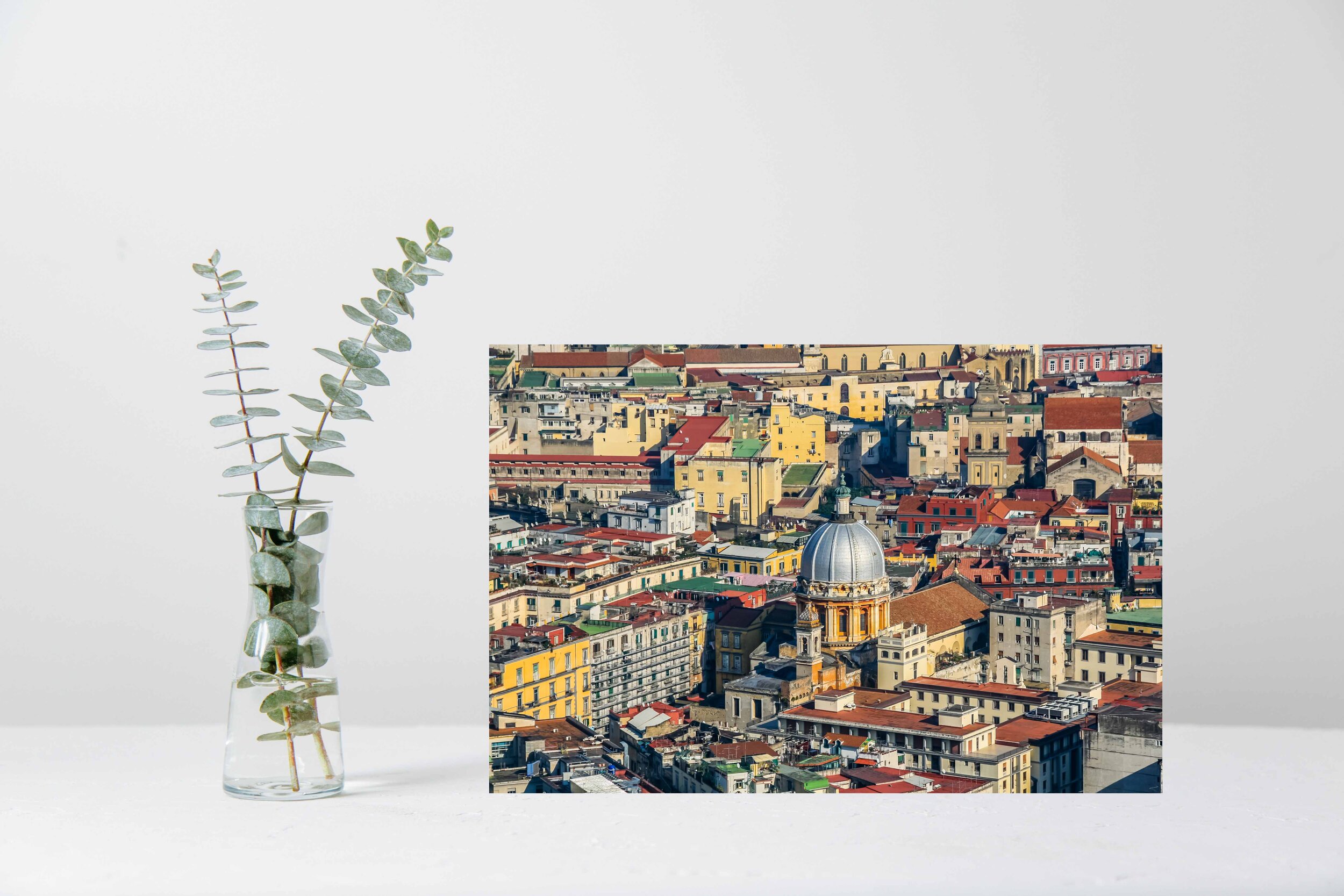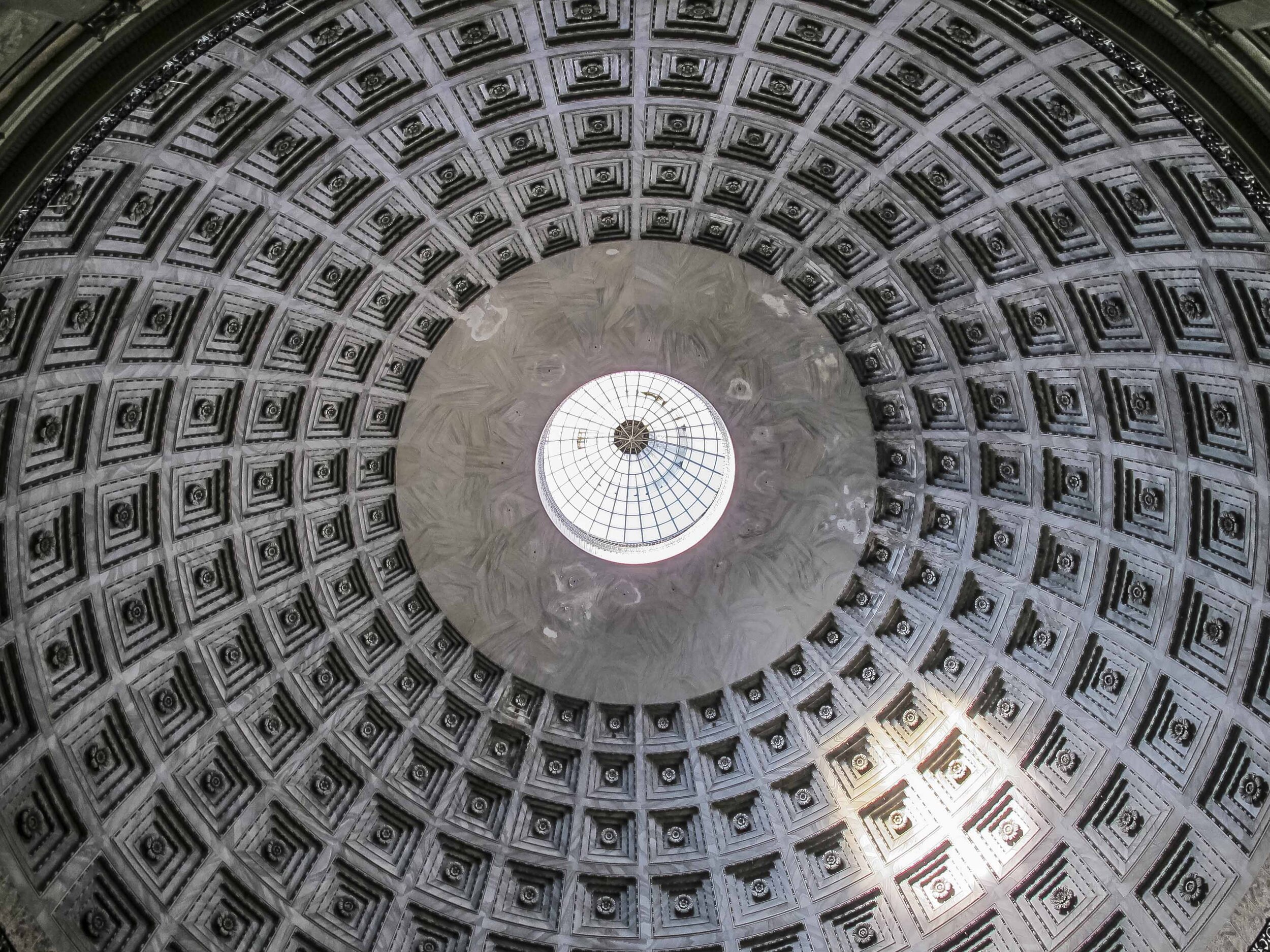The Thermal Baths at Santa Chiara Church
Walking across the serene Majolica Tiled Cloister of the Santa Chiara Monumental Complex and through the Museum of the Works, we find Santa Chiara’s archaeological area, a 1st century CE Roman thermal bath complex. Estimated to have been part of the private villa of one of Rome’s elite, it was constructed during a period of urban renewal following the earthquake of 62 CE and the eruption of Mount Vesuvius in 79 CE. Situated outside of the city gates at the time, it is the most complete and intact example of a Roman era spa in Naples, and is similar to those found in Pompeii and Herculaneum.
Entering the archaeological courtyard, the bustle of Naples’ historic center, Centro Storico seems miles away and one can’t help but wonder what it would be like to partake of those baths today. Starting in a hot bath and moving on to progressively cooler baths, then on to a dip in the pool, what an oasis that would be amid this chaotic city. Unfortunately, all we have left are the spa’s remains to spark our imaginations. Remains which were discovered just some sixty years ago after the tragic bombings of the Santa Chiara Church during WWII, but not excavated until the 1980s.
Fed by the Serino aqueduct, one of the largest aqueduct systems of the Roman Empire that was built between 33 and 12 BC, the complex was built on two levels. The underground floor or hypogeum would have housed the sewerage and heating systems, a storage area, and provided services to the thermal spas. Unfortunately, the hypogeum is currently closed to visitors. Above the hypogeum and arranged in an “L” shaped plan, are the various pools that are typical of those found in a Roman thermal spa.
Taking our baths as the Romans would, we begin with a dip in the calidarium – hot bath, but since archaeologists have yet to uncover a calidarium at Santa Chiara, we will move on to the warm baths – tepidaria on the west side of the complex. There we find two tepidaria (one of which has been dubbed vasca con abside – a bath with apses) flanking a lanconicum, a dry steam bath like a sauna that was set in front of a vestibule. The lanconicum was most likely covered with a cupola, a small dome like structure and has four apses, one at each corner. Its design is quite reminiscent our modern day hot tubs with sculpted seats.
We are now on to the cold bath, the frigidarium at the northern end of the complex. Set in front of a vestibule, it looks out upon a windowed facade beyond. In the center of the facade we find a rectangular niche which is flanked by a niche on each side. After cooling down in the frigidarium and taking in the beautiful views outside the windows, we are ready to take a dip in the pool, also known as piscina or natatio. Entering the pool via a small stair case, a covering over the pool shelters us from the relentless Mediterranean sun. Extending along the east side of the complex, part of the pool is in the archaeological courtyard and part is located inside the museum. From the pool we would have looked out onto a vestibule that extended along the pool’s east side, separating it from what archaeologists surmise was a palestra or gym. Visible only by some traces of a perimeter wall in the vestibule, this section of the spa is similar in arrangement to that of Terma Stabiane in Pompeii. Also set along the vestibule and on the south side of the pool is an octagonal bath – vasca ottagonale.
Our day ends with a nice massage with scented oils and bit of relaxation in the vestibule along the pool. Completely relaxed and refreshed, we are now ready to take on the bustling streets of Centro Storico again, leaving behind for now our foray into the world of the ancient Romans.
The thermal baths archaeological area of the Santa Chiara Monumental Complex is located behind the church. Follow the walking path around the left hand side of Santa Chiara Church and through the arched entry. The entrance to the Museum Complex which includes the Majolica Tiled Cloister, the Neapolitan Presepio, the Museum of the Works, and the Archaeology area is on the right. The archeological area is accessed via the museum which is reached through the back left hand corner of the cloister.
The Thermal Baths at Santa Chiara Church was first published on NapoliUnplugged.com on March 23, 2010.
images From Napoli
Learn More
She Studios is a participant in the Amazon Associates Program, among other affiliate programs, an affiliate advertising program designed to provide a means for sites to earn advertising fees by advertising and linking to Amazon.com and other websites. As an Amazon Associate She earns from qualifying purchases.













